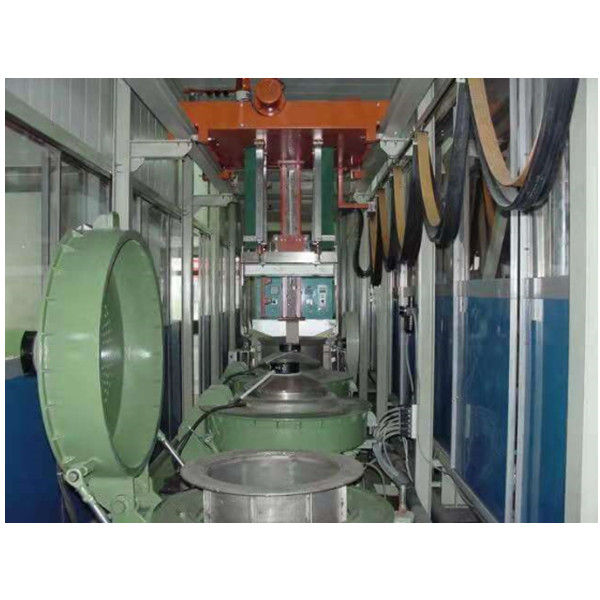In the process of silver plating, we will encounter various faults. The following is a summary of some problems and solutions often encountered in the process of silver plating. I hope we can help you quickly find the cause of the fault.
1、 What is the reason for uneven on silver plating? How to solve it?
At present, cyanide silver plating process is mainly used in industrial production. This solution is relatively stable, but when plating large flat parts, the coating is often uneven and blooming.
The reason for this defect is not only the incomplete degreasing of the workpiece and the influence of the pretreatment itself, but also the low cyanide content in the silver plating solution.
Cyanide silver plating solution does not need to add any additives. Cyanide is used as both complexing agent and cathode surfactant to make the coating crystal fine and uniform.
When the cyanide content is low, according to the medium concentration plating solution, if the cyanide is lower than 309 / L, the anion is easy to discharge on the cathode, which reduces the cathode polarization during electroplating, reduces the range of effective current density, and the coating crystallization is rough, resulting in flower.
In case of this phenomenon, first adjust the cyanide content of the plating solution to the process specification, strictly control the oil removal and pretreatment process of parts, and then apply plating.
When the parts enter the bath, first use high current impact (1 ~ 2 times larger than normal) and properly move the parts. After plating for 2min, take them out, move them up and down in water for cleaning, and then put them into the plating bath. The above defects can be overcome by electroplating according to the normal process specifications.
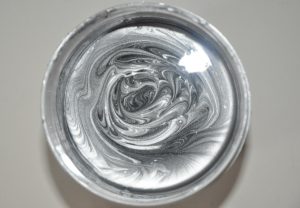
2、 What is the reason for the blue fog film on the surface after the silver plating layer emits light?How to solve it?
At present, no matter what type of silver plating process is used in production, in addition to gloss silver plating, after plating, it needs to go through light treatment to obtain good luster.
The following process flow is generally adopted for light output: chromic acid pickling, water washing, ammonia film removal, water washing and dilute nitric acid. However, after light output, a layer of blue mist film is often generated on the surface of parts, affecting the gloss.
Although the reason for producing this fog film is related to each process of light output, it is found that chromic acid pickling is the most important in production, which is often caused by a small amount of sulfate and trivalent chromium in the pickling solution.
The source of sulfate is brought from industrial grade chromic anhydride. Trivalent chromium is brought from the silver plating layer when it is dipped and brightened. Because hexavalent chromium is reduced to trivalent chromium, the formation of sulfate and trivalent chromium is attached to the surface of the parts as a blue fog film, which is not easy to clean.
The above defects can be removed by precipitation with an appropriate amount of barium carbonate. If too much trivalent chromium is accumulated in the solution and needs to be removed, a small amount of silver nitrate can be used as contact agent, appropriate ammonium persulfate can be added and heated to 80 ~ 90 ℃ to oxidize trivalent chromium into hexavalent chromium, so as to avoid the formation of blue fog film, which can greatly prolong the service life of the solution and save chromic anhydride,Reduce environmental pollution caused by wastewater.
3、 How to silver plated copper components after tin plating?
In the electronic, electrical and instrument industries, we often encounter some copper components that need silver plating after tin welding, such as the moving and fixing pieces of air capacitors. The connection between the pieces and the shaft is tin welded, and the joints of shielding covers and isolation plates are also tin welded. After tin welding, some flux and its decomposition substances will remain on the surface,In this way, two different metal materials and dirt are formed on the same part, which brings some difficulties to electroplating.
Most of the commonly used soldering tin is an alloy composed of lead tin welding in different proportions.
This solder is attached to the parts. During pickling before plating, several different metals are in the same pickling solution (this acid is usually a mixed acid of nitric acid and sulfuric acid). As a result, copper pickling is very good, but lead and tin become gray black. This is because the oxidized products of lead and tin are loose, the conductivity of black gray film is poor, and electroplating is difficult.
In this case, the flux at the welding joint shall be cleaned with alcohol or other solvents first, and then pickled. Different methods shall be adopted according to the specific shape of the parts.
Parts with simple shape and easy brushing can be brushed to remove the gray black film.For parts with complex shape, it is not easy to brush. It can be pickled with concentrated nitric acid (not to form lead sulfate). Its conductivity in the black ash film is slightly better.
After pickling, cyanide copper plating can be carried out directly. First, high current impact plating (2 ~ 3 times higher than normal current) is used to cover a thin layer of copper;Then silver plating shall be carried out, the same impact shall be carried out with high current, and the parts shall be properly swung. After plating for 3 ~ 5min, it shall be taken out and cleaned in clean water, and then put into the plating tank for electroplating according to the normal process specifications to obtain a sound silver plating layer.
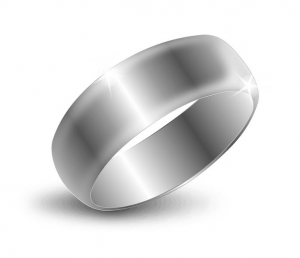
4、 Why is silver plating easy to turn yellow and black in the air?Does it affect the conductivity?
Generally speaking, the chemical stability of pure silver is relatively good. It is not easy to dissolve in ordinary acid and alkali (except nitric acid and aqua regia), but it is easy to react with sulfide in the air to produce black silver sulfide.
At first, it looks yellow due to the small amount of silver sulfide. With the extension of time, the amount of silver sulfide increases, and the whole surface becomes black brown.
As we all know, some silver plating is for conductivity, so if the silver plating layer turns black, does it affect the conductivity?Some people have done research work in this field and believe that the silver sulfide film formed under natural conditions is very thin. Even under the condition of strong formation, the thickness of the film is only close to 0.1μm。
The insignificant thickness of this silver sulfide layer is unlikely to have any significant effect on the conductivity of silver plated parts.Because even in a special high-frequency system, the depth of current penetration is many times greater than the thickness of the silver sulfide film described above.
In addition, silver sulfide is often mixed with metallic silver, which is difficult to remove even when preparing pure silver sulfide reagent.Obviously, the metal inclusions infiltrated into silver sulfide play a bridge role in increasing conductivity, and silver sulfide itself is also conductive, which is 20% of metal conductivity under normal conditions.
So, if the surface of the silver plating layer turns black, does it have no effect?
That’s not true.Its influence is mainly reflected in the following aspects.
(1) Due to the uneven formation of silver sulfide film under natural conditions, the coating has a “dirty” non commodity appearance, which is very unsightly, which is very unfavorable for the decorative purpose of silver plating.
(2) Although silver sulfide film has no obvious effect on the conductivity of the plated parts, the conductivity of silver sulfide itself is much worse than that of pure metal, so the contact resistance of the connecting surface of the plated parts will increase, which will have a bad impact on some connectors, especially when the connectors are not tight enough.
(3) The brazing property of silver metal is relatively good, but after silver sulfide is formed on the surface, it can hardly be welded, which is unfavorable to the maintenance of the equipment.
To sum up, the designer of electronic equipment should not worry about the discoloration of silver plated parts affecting the conductivity, but should also consider its adverse factors to develop strengths and avoid weaknesses.
5、 Why should cyanide silver plating be pretreated?
Silver plating is mostly carried out on copper and copper alloy parts.
In order to obtain silver coating with good adhesion, whether cyanide silver plating or other silver plating, pre plating or mercury homogenization treatment is required.This is determined by the special properties of metallic silver.
Silver is a noble metal with strong positive electricity. According to the order in the electrochemical sequence, copper is in front of silver, so the potential of copper is negative than that of silver.
When the copper part contacts with the silver plating solution, the copper will have a displacement reaction with the silver particles in the electrolyte. As a result, the copper will be transformed into copper ions into the solution, and the silver ions will get electrons to precipitate from the solution and deposit on the copper part.
This reaction is not only because copper ions pollute the silver plating tank, but also because the obtained silver layer is relatively loose and the adhesion with copper matrix is not strong.
If plating is carried out on this loose replacement silver coating, the resulting coating can not meet the adhesion index and quality requirements. Therefore, in addition to oil and acid corrosion, copper and copper alloy parts also need special pretreatment before plating before entering the plating bath. The simplest method in production is mercury homogenization.
After Mercury amalgamation treatment, a layer of dense copper amalgam is formed on the surface of copper parts.The potential of this layer of alloy is more positive than that of silver, so as to prevent the replacement coating easily produced during silver plating.
As the mercury homogenization treatment is corrosive and toxic, it is not suitable for tableware and parts with high precision requirements. Some enterprises use copper cyanide pre plating or silver pre plating in cyanide bath with low silver ion concentration to change the potential on the surface of parts and improve the adhesion of silver plating layer.
The specific selection method can be determined according to the requirements and uses of product parts.
6、 What problems should be paid attention to in silver plating of copper castings?
The metal structure of cast copper parts is looser than that of rolled and rolled copper materials, with rough and porous appearance. In addition, some molding sand, paraffin and silicate substances are often left on the surface of cast copper parts. If they are not cleaned, they often lead to local plating failure,Therefore, the surface cleaning treatment of copper castings and strengthening appropriate process steps are the key to solve the silver plating quality of copper castings.
Generally, the following process flow can be adopted for copper castings: alkaline chemical degreasing, hot water washing, clean water washing, immersion in 25% hydrofluoric acid, clean water washing, mixed acid corrosion, clean water washing, immersion in 5% alkaline solution, clean water washing, pre copper plating, clean water washing, silver plating, clean water washing, passivation, clean water washing, film removal, clean water washing, soaking, bright water washing, hot water washing, drying and inspection.
Due to the loose and porous metal structure of cast copper parts, the process requirements must be strict in the electroplating process:
(1) Each process shall be cleaned thoroughly to prevent the solution remaining in the pores from affecting the next process;
(2) The actual surface area of cast copper parts is many times larger than the calculated surface area, the impact current density during electroplating is about 3 times higher than that of ordinary parts, and the pre plating time is longer than that of ordinary parts;
(3) During pre copper plating, the parts and the hanger shall be shaken frequently to ensure the uniformity and consistency of the coating color and prevent the appearance quality of the coating from being affected by the phenomenon of flower spots during silver plating;(4) During silver plating, the bath must be charged, the impulse current density shall be adopted, and the electroplating shall be carried out for 5min on the premise of shaking the workpiece, and then it shall be converted to normal current density;
(5) The passivation treatment after silver plating shall be strengthened, washed in flowing water for 10 ~ 20min, washed with hot water and dried immediately. The oven temperature can be controlled at 100 ~ 150 ℃ for a longer time to prevent mildew.
7、 How to select the pre plating layer of silver plating on iron and steel parts?
Due to the good mechanical and physical properties of silver, silver plating on iron and steel parts is widely used in anti bonding coating under load conditions in national defense and communication industry and sealing coating as hot gas seal.
Due to the great difference in the standard potential between iron and silver, if the intermediate pre coating is selected unreasonably or operated improperly, it is easy to cause quality problems such as weak adhesion between iron and steel parts and silver coating and poor corrosion resistance of coating, resulting in rework and scrapping of products.
For the special requirements of silver plating on steel parts, the following points should be paid attention to in production.
(1) The pretreatment method of silver plating on iron and steel parts can not be directly homogenized like copper and its alloys.
Because copper and mercury can form a dense copper amalgam, and the potential of this layer of alloy is more positive than that of silver, the silver layer will not be replaced during silver plating in the lower groove of parts, but iron can not form an alloy with mercury, so a pre coating with good adhesion can not be obtained. Therefore, mercury amalgamation treatment is not suitable for the pretreatment of iron and steel parts.
(2) For silver plating of iron and steel parts, appropriate pre coating shall be selected according to the requirements of the product. For electrical parts with high conductivity requirements, carefully crystallized copper cyanide shall be selected as the pre coating.
When the parts are used for a long time above 150 ℃, the pre plated acidic nickel layer is better than the pre plated copper layer, because the silver copper alloy formed by silver diffusion at the interface between the base metal and the coating is brittle and harmful to the adhesion of the coating.
(3) When iron and steel parts are plated with silver as high-temperature anti-oxidation sealing coating, nickel plating and gold plating should be selected as pre coating and intermediate layer.
Since the metal layer is preferentially diffused to the base metal, the diffusion and foaming of the silver plating layer under the condition of high-temperature oxidation are prevented, so that the silver plating layer has the best sealing and adhesion under this condition.
(4) The adhesion of silver plating on iron and steel parts depends on that the pre coated metal can form alloy interpenetrating coating with base metal and alloy with silver layer, which is also one of the standard conditions for selecting pre coating and intermediate coating.
Metals that can form alloys with iron include nickel, cobalt, gold, palladium, etc., and metals that can form alloys with silver include copper, nickel, gold, palladium, etc. appropriate pre coating and intermediate layer can be selected according to the service environment and purpose of iron and steel parts.
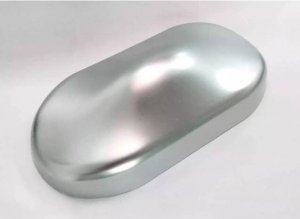
8、 Why use potassium salt instead of sodium salt for cyanide silver plating?
Cyanide silver plating has a history of more than 100 years, and the formulas for various purposes are relatively complete. However, it can be seen from the composition of each formula that the cyanide silver plating electrolyte is prepared from potassium cyanide. Why doesn’t silver cyanide use sodium cyanide to prepare the electrolyte?
Long term practice has proved that potassium salt has many unique properties than sodium salt.
(1) The conductivity of potassium salt electrolyte is higher than that of sodium salt electrolyte, the limit current density is also higher, and the whole current density range is also higher than that of sodium salt electrolyte.
(2) The potassium carbonate produced in the electrolyte prepared with potassium salt has high solubility. If the sodium carbonate in the bath liquid exceeds 609 / L, the crystallization of the silver layer will be rough. However, if the electrolyte prepared with potassium salt is used, the potassium carbonate concentration can rise to 909 / l without harmful effects.
(3) The cathodic polarization of potassium salt electrolyte is slightly higher than that of sodium salt electrolyte, with strong dispersion ability and fine crystallization of the coating.
(4) The purity and physical properties of silver layer obtained from potassium salt electrolyte are better than those of sodium salt electrolyte.
(5) The sulfur content of potassium salt is less than that of sodium salt (very small), and the sulfur content of silver plating layer is also relatively reduced, which improves the anti discoloration ability of silver layer.
For example, when using sodium salt with low purity, it is difficult to dissolve the anode at first, and then the sulfur in the sodium salt reacts with the silver in the solution to turn the whole electrolyte into gray black, resulting in failure of normal electroplating. Therefore, when plating precious heavy metals, potassium salt is often used to prepare the electrolyte.
9、 How to maintain and control cyanide silver plating tank?
Cyanide silver plating solution is a kind of electrolyte with high price. Good management habits should be formed in the maintenance and control of bath solution.
Under normal working conditions, the cathode and anode current efficiency of cyanide silver plating are actually 100%, so the content of metal ions in the solution can remain unchanged for a long time.
Because the electrode potential of silver ion is positive, it can be deposited preferentially in the process of electrode reaction. Even if the solution contains a small amount of metal impurities with negative multi potential, it will not have a serious impact on the silver coating, but the pollution of heavy metal impurities and organic impurities can not be ignored.
The contamination of Fe2 +, Cu +, PB2 and other impurities will cause loose coating and change the physical properties of the coating. The carrier of organic impurities will lead to brittle fracture and even peeling of the coating.
Although cyanide silver plating solution is more stable than other cyanide free silver plating solutions, the following points should be paid attention to in maintenance;
(1) When various copper and its alloy parts fall into the plating bath, they shall be taken out immediately to avoid polluting the bath solution;
(2) When complex parts are silvered, they shall be cleaned, and various solutions shall not be entrained into the silvering tank;
(3) Anode is an important source of inorganic impurities. The purity of plated anode should be kept above 99.97%;
(4) After silver plating, the silver plating tank shall be covered to prevent dust and other impurities from falling into the tank.
Cyanide silver plating tank is generally controlled according to the workload and the appearance of the coating.Usually, the main reasons for the change of tank liquid composition are the decomposition of cyanide, the consumption and removal of silver ions and the accumulation of carbonate.
When the silver ion is too low, it is easy to produce dendritic silver layer, and the passivation of the coating is not bright.At this time, silver ion can be added appropriately, or anode plate can be added to adjust the supplement.
When the dissolution of silver plated anode is abnormal, brush the anode and add cyanide content.When the carbonate exceeds 909 / L, the crystallization of the silver plating layer will be very rough, and the corrosion resistance and discoloration resistance of the silver layer will become poor. 1.49 barium cyanide can be used to precipitate L9 potassium carbonate for carbonate treatment. Due to the high cost of barium cyanide reagent, the use is limited.
At present, calcium hydroxide, which is economical and widely sourced, is often used instead.Only 0.59 calcium hydroxide is needed to remove 19 barium carbonate.
Under normal working conditions, the coarseness of the coating is caused by solid particles dissolved in the anode. Therefore, the silver plating tank should be filtered regularly.
In order to eliminate the pollution of various organic impurities, occasionally adding L9 / L activated carbon for filtration is also an indispensable condition for controlling the silver plating tank.
10、 What is the reason why the anode is blackened during silver plating?
In the process of silver plating, anode passivation and silver anode plate blackening sometimes occur. The reasons for this phenomenon are as follows:
(1) The free cyanide in the silver plating bath is low and the pH value is low, which is not good for the activation and solubility of the silver anode. On the other hand, it is the polarization film produced by the influence of the brightener and decomposition products in the silver plating bath.
(2) The ratio of anode to cathode is incorrect, which is less than 1:1 [general requirement L: (1.5 ~ 2)], resulting in too high anode current density, resulting in passivation of anode plate.
(3) The content of iron impurities in silver plating bath is high and affected by sulfide impurities.
(4) The silver anode plate material is impure and contains heavy metal impurities such as lead and copper, resulting in oxidation blackening during anodic dissolution.
The above is the summary of the top ten common problems of silver plating. If you have more questions, you can pay attention to us, or leave a message at the bottom of the article to communicate with you.





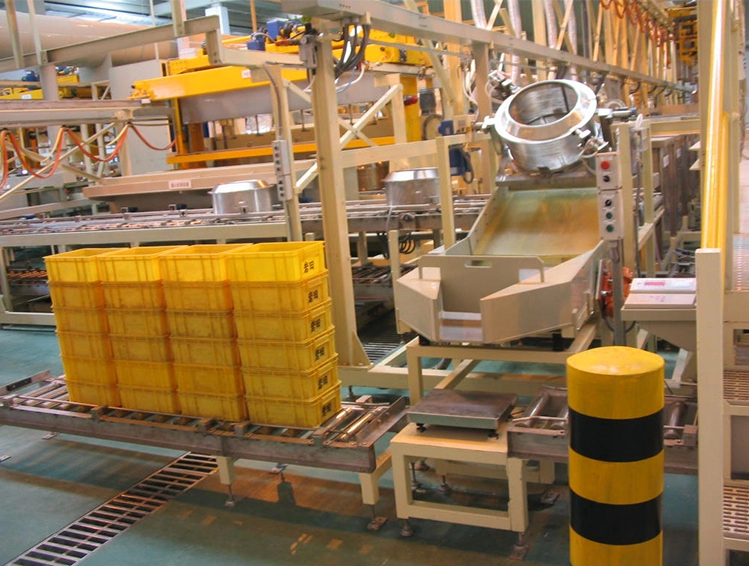
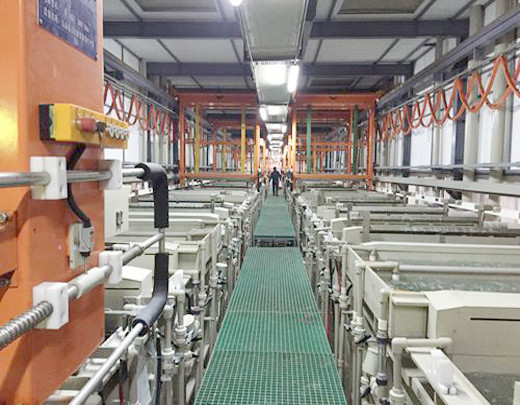
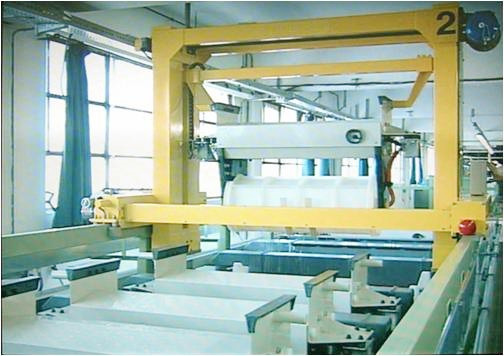
 Nov. 01, 2021
Nov. 01, 2021 